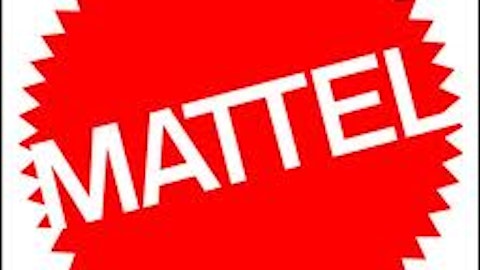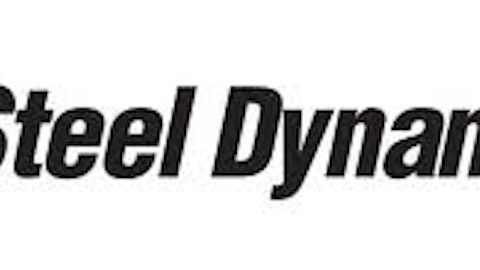With interest rates still near record lows, dividend stocks remain one of the only options available for income-hungry investors — especially those at or nearing retirement. Thankfully, there are plenty of options out there. We at StreetAuthority call the best of the best “Retirement Savings Stocks.“
A great place to find Retirement Savings Stocks is in the energy sector. Many yield-seekers are finding them especially attractive these days, because of their generous payouts. In addition, because commodities are dollar-denominated, energy stocks provide an effectivehedge against inflation, which could make a comeback as the economy picks up steam.
The only problem is that demand for energy stocks has bid up the prices on prominent stocks to levels that make their yields less appealing. For example, the yield on Exxon Mobil Corporation (NYSE:XOM) shares has fallen below 3%. So with many of the better-known energy names already looking overpriced, a better strategy may be to consider lesser-known stocks.
The “Retirement Savings Stock” Yielding 7%
AmeriGas Partners, L.P. (NYSE:APU) may be an investment you should consider. This energy master limited partnership (MLP) is small when compared to industry giants such as BP plc (NYSE:BP) and Royal Dutch Shell plc (NYSE:RDS.A), but pays a much larger dividend: shares yield 7%, in fact.
In addition, while not as well-known as the oil majors, Amerigas Partners is no start-up. This company has rapidly grown to become the largest propane distributor in the United States, supplying propane fuel to more than 2 million businesses and homes in all 50 states. Many may be familiar with the small propane tanks used for backyard barbeques, but propane is also widely used for heating and in industrial uses such as powering machinery. Amerigas Partners offers geographic diversification and a low-risk business model, providing necessary fuel for millions of businesses.
Now may be the perfect time to purchase shares since the company is gaining synergies and increasing scale following a major acquisition. In January, Amerigas Partners became the industry’s dominant player by acquiring Heritage Propane, the nation’s third-largest propane supplier, in a $2.9 billion deal. The Heritage purchase extends Amerigas Partner’s distribution network to 1,200 locations, increases annual sales volume by 500 million gallons (60%) and doubles the size of the retail customer base. Its larger size will enhance Amerigas Partner’s earnings by expanding market share and boosting margins on gallons sold. The company also has opportunities for even more growth through smaller bolt-on acquisitions.
The Heritage acquisition also brought Amerigas Partners the financial resources of a powerful new partner, Heritage’s former owner, Energy Transfer Partners LP (NYSE:ETP). Energy Transfer Partners now owns 32% of the MLP. Another 26% is owned by the general partner, UGI Corp (NYSE:UGI), which has $6 billion in annual sales.
Financial Results
Amerigas Partner’s financial results for the first nine months of fiscal 2012 already show some of the benefits from the merger. The company recorded a higher seasonal net loss for this year’s June quarter because of acquisition-related charges and warmer-than-usual spring weather. But cash flow, the main driver of the partnership’s distribution (dividend) growth, improved more than 9% to $350.2 million in the first nine months of 2012 from $320.7 million in the same period one year earlier. Management raised its guidance for cash flow in fiscal 2013 by 6% from $620 million ($6.68 a unit) to $660 million ($7.11 a unit).
Amerigas Partners expects to realize $15 million of synergies from the Heritage acquisition in this year’s September quarter and at least another $50 million of synergies next year. As a result of the acquisition, analysts are now predicting 12%-a-year growth in Amerigas Partner’s earnings in the next five years, which is a much higher rate than the 8% growth forecast for industry peers and 10% growth for S&P 500 stocks.
40% growth in dividends
The rise in earnings should also help Amerigas Partner’s distribution coverage, with cash flow providing better than two-fold coverage of the distribution next year. Improved coverage should allow Amerigas Partners to continue to make acquisitions while easily delivering on its promise of 5% annual distribution growth.
Amerigas Partners already has a good track record in this department. The annual distribution has risen from $2.24 six years ago to $3.20 today; that’s more than 40% growth. As a nice bonus for investors, the company has also occasionally paid special one-time dividends: 25 cents in 2007 and 17 cents in 2009.
Most investors view insider share purchases as a positive sign that the people running the company are confident and are willing to put their money where their mouth is. Amerigas Partners’ CEO purchased 4,000 shares in a March transaction valued at $161,000. In addition, two senior officers acquired 1,245 shares and two directors bought 5,000 shares in August in transactions worth $208,000.
Risks to consider: MLPs are required to distribute the majority of their income to investors and rely on debt and dilutive equity to make acquisitions. Investors should also note that MLP distributions are taxed as ordinary income rather than at the lower dividend rate. But because of depreciation allowances, typically 80%-90% of the distribution is considered a return of capital, which results in taxes on this portion being deferred until the MLP units are sold. Even better, the return of capital portion reduces thecost basis of the investment and the tax liability over time. And if an investor decides to sell MLP units sooner rather than later, then profits are taxed at the more favorable long-term capital gains tax rate. Calculating the tax bill on a MLP investment can be complicated, so it may make sense to consult a tax professional.
Action to take–> Amerigas Partners isn’t exactly cheap at the moment. Shares trade in line with the industry price-to-earnings (P/E) ratio of 28. And at $44 per share, the stock is just 5% below the 52-week high. Still, a generous 7% yield and superior safety (the stock’s beta of just 0.38 means it is 62% less volatile than the market) makes this an attractive investment for any investor looking for a Retirement Savings Stock. Any pullback in the price should be viewed as an attractive entry point.
This article was originally written by Lisa Springer, and posted on StreetAuthority.






